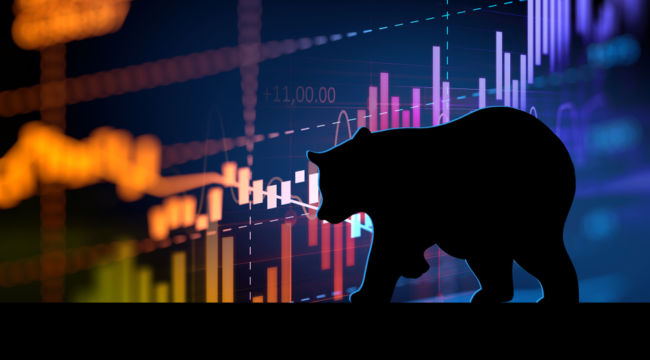What Happened to the Bear Market
From valley to peak in the space of one month…
The bears were poised to claim final victory in late December… and black crepe was unfurling over Wall Street.
The major averages lost nearly 20% from their early October highs. The Nasdaq in fact tumbled into an official bear market.
Who could say where it would stop?
All things good must end — unlike some things bad — and 10 years is a plenty handsome run.
But a hero stepped forth at the fatal hour…
“Not on my watch!” thundered Jerome Powell.
Through the canyons of Lower Manhattan he rode, atop his barreling white steed… down Broadway, left on Wall… and through the doors of the New York Stock Exchange.
Mr. Powell announced he was “prepared to adjust policy quickly and flexibly”… and that he was “listening carefully” to markets.
He further pledged to announce a halt to quantitative tightening “if needed.”
“We wouldn’t hesitate to change it,” he reassured the assembled.
Powell was huzzahed and hoorayed through all of Wall Street… and tall glasses were hoisted in his honor.
Thus the “Powell Put” was christened.
Markets now know Powell is behind them if the bears draw too close…
As they knew Yellen was behind them… and Bernanke before her… and Greenspan before him.
The Dow Jones has recaptured some 3,000 points since its Dec. 24 bottom.
The S&P has put on a similar show, and the Nasdaq has nearly clawed out of its bear market.
Have underlying economic conditions brightened vastly to justify the upswing?
Not by our liver and lights…
Does not a Federal Reserve about-face mean it spots trouble ahead? Why else would it back off?
Growth is trending in the improper direction.
Q4 GDP 2018 numbers have yet to be released, yet they will likely slip beneath Q3’s.
Meantime, the New York garrison of the Federal Reserve published its U.S. household debt and credit report yesterday.
It revealed a record 7 million Americans are at least 90 days behind on their auto loans.
If further revealed that private debt scaled a record $13.5 trillion in last year’s final quarter.
That same Federal Reserve Bank of New York gives a 21% chance of recession within the next year — its highest reading since 2008.
A Bloomberg survey of economists has it at 25%… the highest in six years.
Finally, JPMorgan estimates a 35% chance of recession this year — up from 16% last March.
Do we place our stock in the speculations of Ph.D.-ed economists?
We certainly do not.
But why else has the stock market had its run… if not for the heroics of the Hon. Jerome H. Powell?
It’s the splendid unemployment numbers, you say.
Unemployment struck a 49-year, 3.7% low in September. It rose to 3.9% in December… and 4% in January.
Fine numbers all, a swell show by any account.
But the trend is higher…
And according to data from the National Bureau of Economic Research, unemployment often bottoms nine months before recession.
If unemployment scraped bottom in September… you may wish to keep a weather eye on June.
We, of course, hazard no formal prediction.
Perhaps the global economy justifies Wall Street’s renewed rambunctiousness?
It is unlikely.
China wallows, Japan dozes, Germany verges on recession, Brexit overhangs Great Britain as a sword overhung Damocles of old.
Further examples abound.
Meantime, the United States-China trade deadline is two weeks out.
One day a deal seems likely. The next it does not.
“Uncertain” is the word that leaps to mind.
Yet Wall Street is presently having itself a moment.
When that moment fades… we cannot say.
There is even renewed talk of a “melt-up.”
One source is Dario Perkins, managing director of global macro at TS Lombard.
This fellow likens today’s market to 1998 — the years preceding the dot-com mania — and its subsequent collapse.
Analyst Mark Kolakowski, summarizing Perkins’ stance:
“Like today, many parts of the world were in distress.” In response, “the FOMC shifted from a tightening bias to an emergency rate cut in a manner of weeks.” The principal effect, he says, was a two-year melt-up, or sudden surge, in stock prices that eventually led to the so-called dot-com crash, in which the S&P 500 dropped by 45% and the Nasdaq Composite plummeted by 78%…
Perkins predicts that the Fed may cut rates in the second half of 2019 as U.S. exports weaken and delayed effects of previous rate hikes take full effect.
Again, we offer no specific prediction. But melt-ups are followed by meltdowns.
Regardless, the market gods will not be forever duped and put off.
As we have claimed before:
One day, however distant, there will likely be hell to pay…
And it won’t be the bears doing the paying…
Regards,
Brian Maher
Managing editor, The Daily Reckoning



Comments: